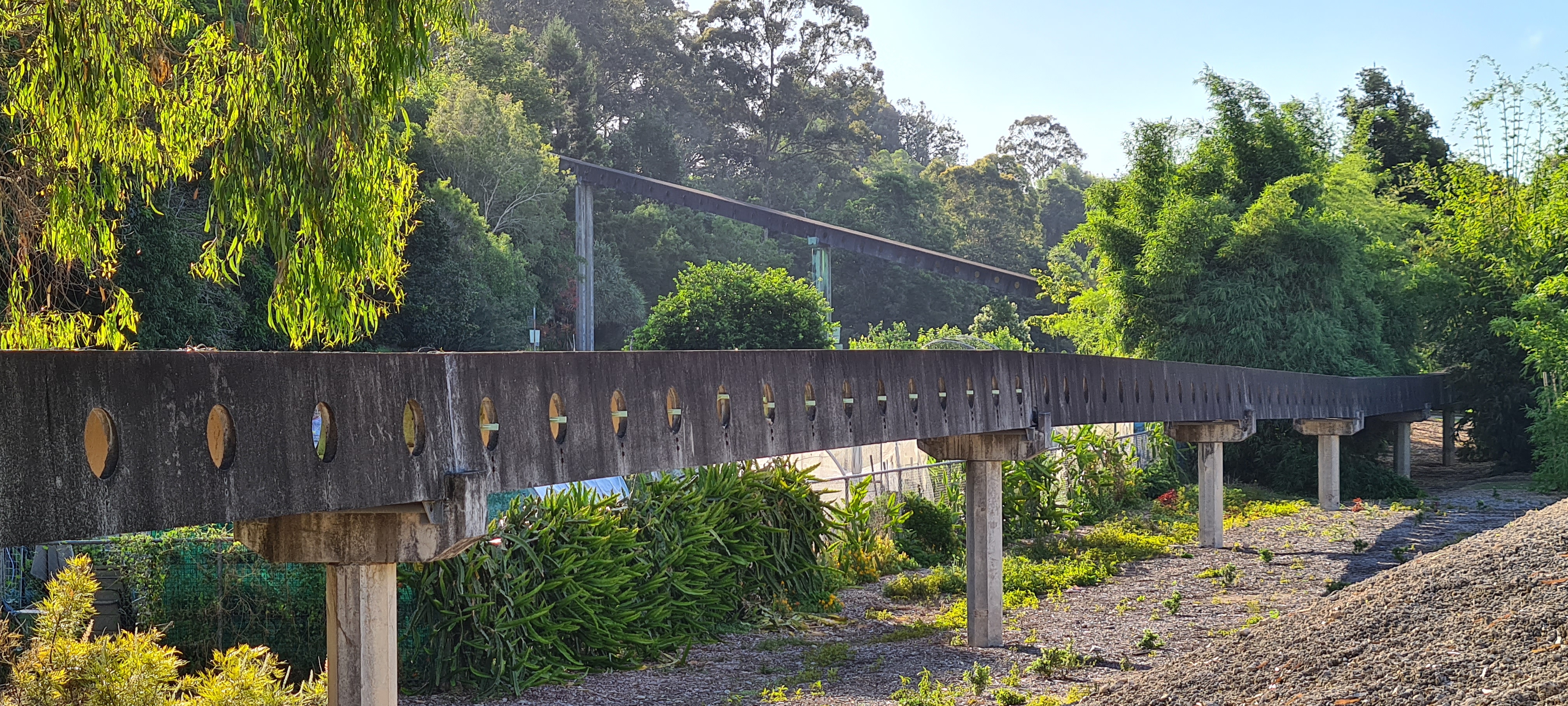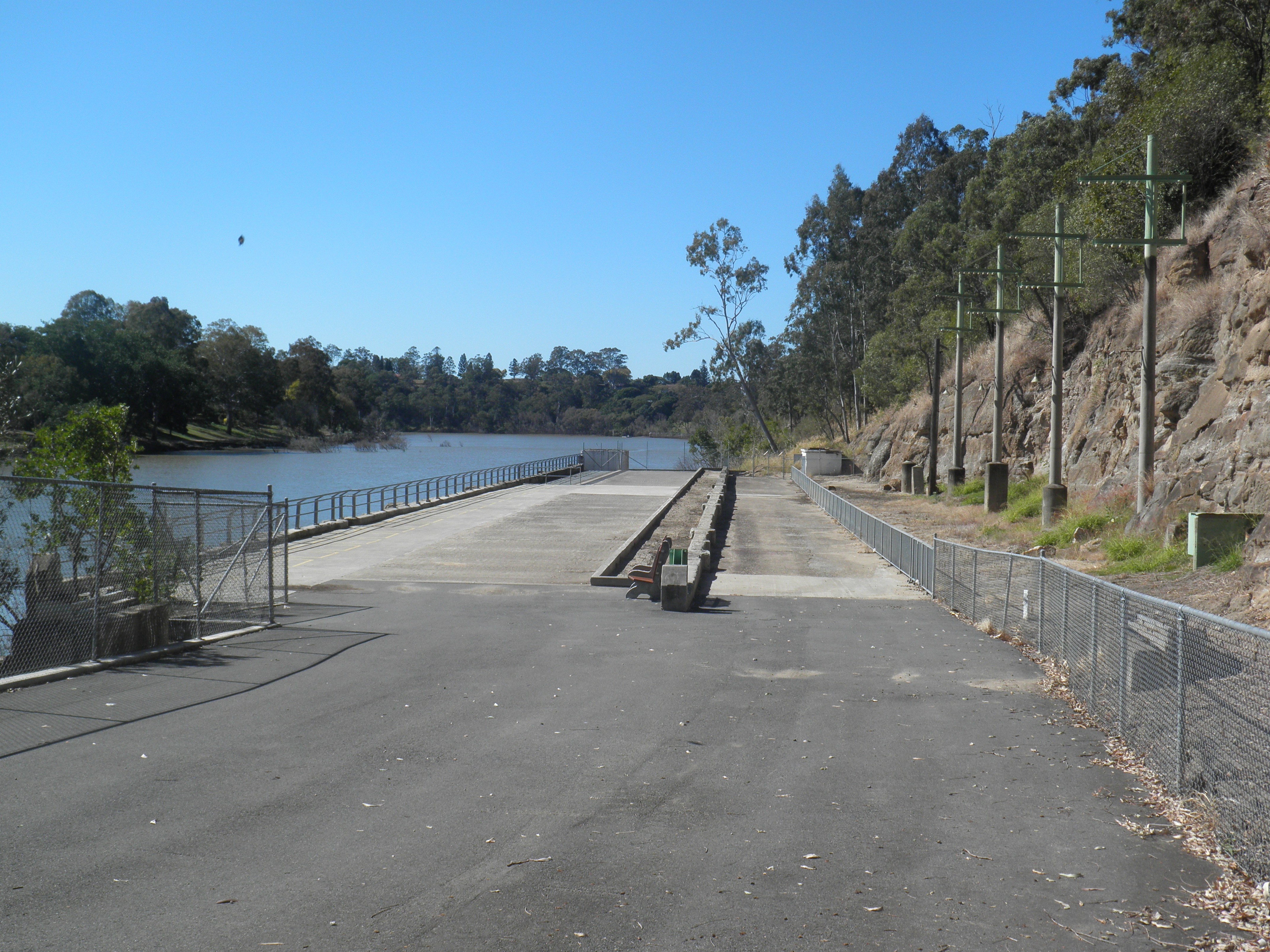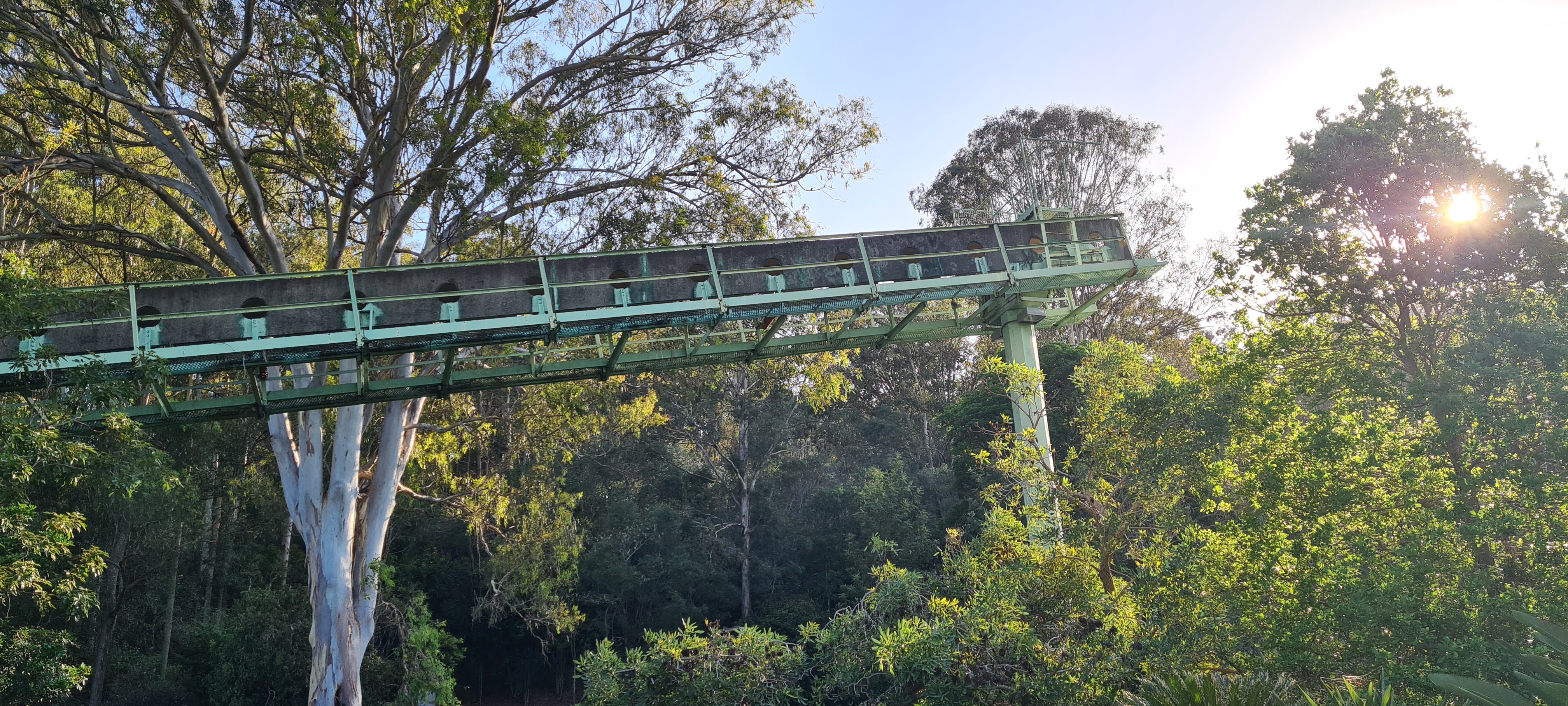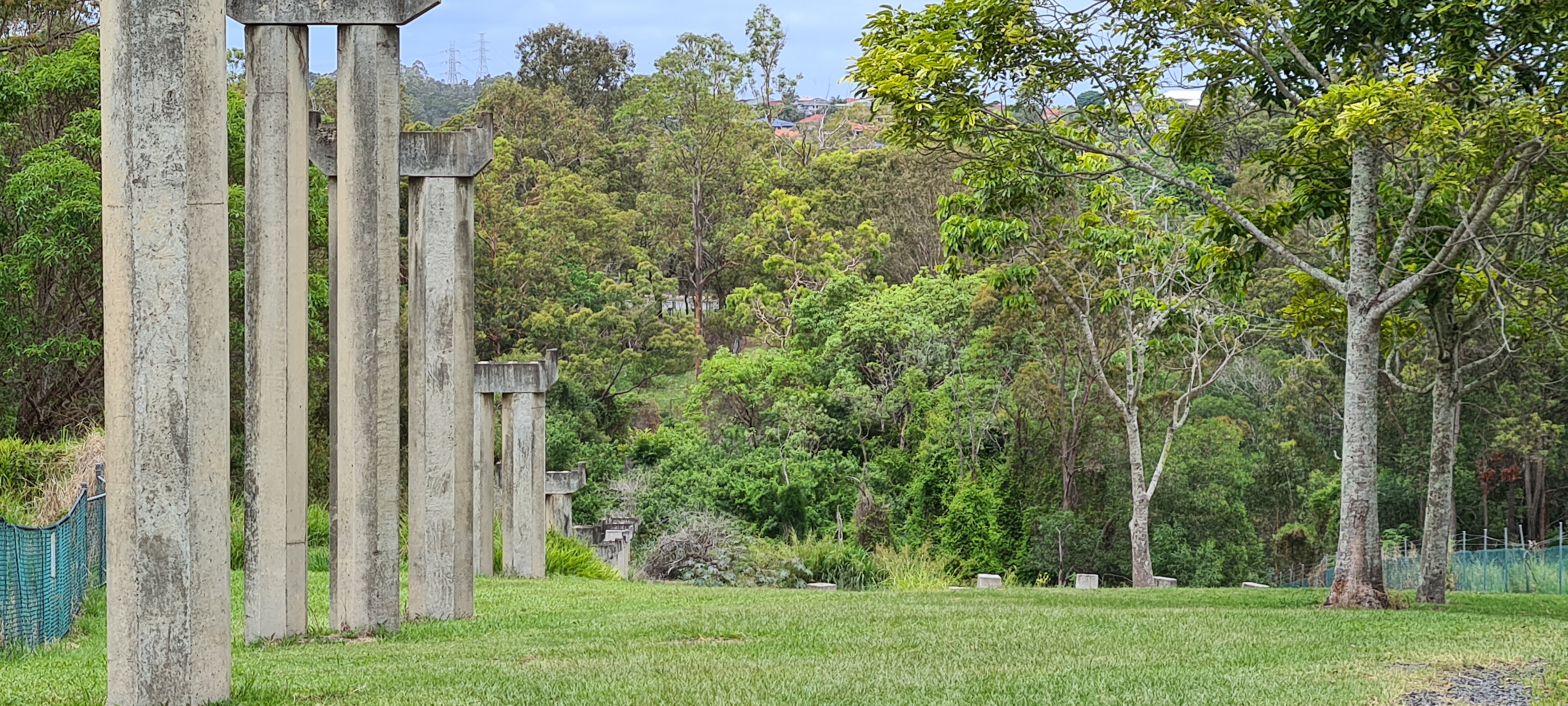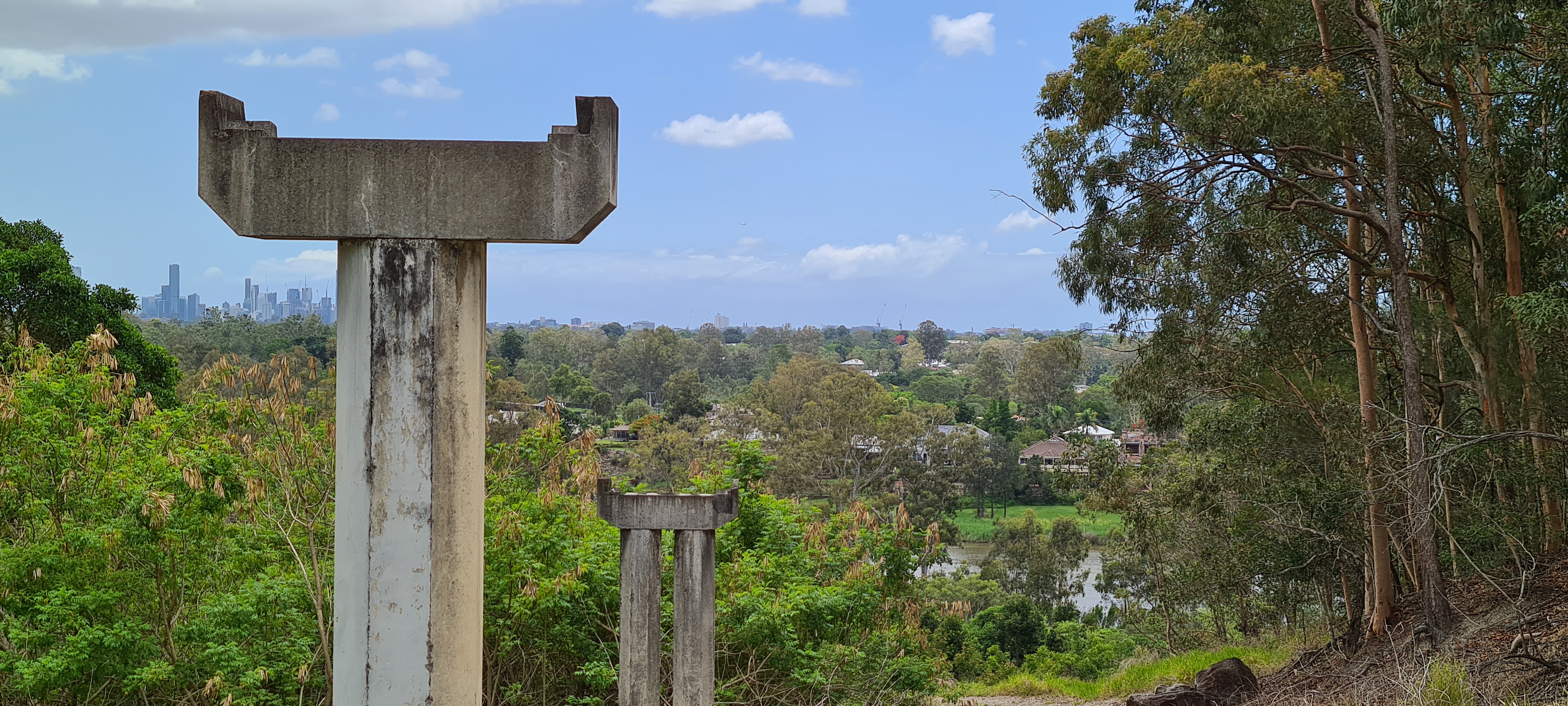Addresses
Type of place
Wharf, Process (other)
Period
Interwar 1919-1939, Late 20th Century 1960-1999
Addresses
Type of place
Wharf, Process (other)
Period
Interwar 1919-1939, Late 20th Century 1960-1999
The Queensland Cement and Lime Company constructed a large conveyor belt from Oxley Wharf to the cement manufactory at Darra in 1964. Prior to this date the crushed coral that had been dredged from Moreton Bay and delivered by ship to Oxley Wharf. It was then transported by truck to the Darra plant to be used in the cement making process. The wharf was constructed in 1937 by the cement company as a response to the change in the process of sourcing lime. The conveyor belt was constructed as a means of accelerating the delivery process. The wharf and conveyor belt are important remnants of one of Queensland’s most successful industries in the twentieth century and its connection to the Brisbane River.
Lot plan
L3_SP133204; L4_SP133204
Key dates
Local Heritage Place Since —
Date of Citation —
Construction
Structure: MasonryCriterion for listing
(A) Historical; (B) RarityInteractive mapping
Lot plan
L3_SP133204; L4_SP133204
Key dates
Local Heritage Place Since —
Date of Citation —
Construction
Structure: MasonryCriterion for listing
(A) Historical; (B) RarityInteractive mapping
History
The Queensland Cement and Lime Company was established in 1914 and throughout its history has played an integral role in shaping the district. In the early years of the twentieth century a consensus was met between a group of large Brisbane business leaders that highlighted the genuine need for a cement industry in Brisbane. They were described as “men of vision, who see what our resources are capable of, and men of daring initiative and enterprise, who are not afraid to back up their opinions with their capital. Queensland owes much to such men”1. Prior to this all cement was imported, mostly from England, making it expensive and delivery unreliable. Investors were sought and on the 2 June 1914 the Queensland Cement and Lime Company Limited was officially incorporated. The first Board of Directors was chaired by J. W. Hetherington, Mayor of the City of Brisbane (1910 and 1916--1917) and Managing Director of Blair Athol Company Ltd and Hetherington and Rylance Ltd. The Board was made up of many of Brisbane’s most prominent businessmen and politicians including Philip James Symes, director (1914-57) and chairman (1929-55) of Queensland Cement and Lime Company Limited.
With the outbreak of the First World War the newly established company confronted several problems, including increased building expenses for the plant. However, by June 1917 the Darra plant was fully operational. The location of the Darra plant was chosen for several reasons; it was away from residential areas, close to the railway, had its own shale, sand and clay deposits that were used in production and was in close proximity to the Ipswich coal fields. Limestone deposits, an important ingredient in cement manufacture at this time, were mined at Gore, outside Warwick and then transported by rail to the Darra plant as reported in The Queenslander, “Within 200 yards of the works are extensive deposits of shale particularly well suited to cement manufacture, and it is able to obtain for Gore, in the Warwick districts, a limestone which contains no less than 99 percent of pure lime”1. Darra was the perfect site for the establishment of a cement factory.
The machinery for the factory was imported from Britain, “the machinery is… to be of British manufacture, and has been selected by, and will be manufactured and shipped under the direction of Mr. Masted, who is well known as one of the best cement engineers in England”1. The 1917 plan of the site shows the factory as it was when it opened; existing structures included the first single kiln, two cement silos, two triple mixers, raw mill, coal mill, cement mill, brick industrial chimney and an office and laboratory. A railway siding also extended from the main Ipswich line through the site.
The Queensland Cement and Lime factory, throughout its history has used the latest technology in the plant as well as playing an important role in the advancement of cement technology. An example of this was the construction of a power station on the site. Electricity in Brisbane was still a new technology in this period with only a small percentage of the city on the electricity grid - the Central Business District and Fortitude Valley. Electricity in Brisbane at this time was supplied by the private firm of the City Electric and Light Company until 1925 when the newly formed Brisbane City Council established the Electricity Department that acted as a central authority guiding the provision of electricity throughout the city. The board of the Queensland Cement and Lime Company realised the need for an efficient electricity supply for the factory and being so far from the inner-city supply felt it essential to install a fully functioning power station on the site to generate this power.
As with the machinery for the plant, the power station was designed in England and shipped to Brisbane, then assembled on site. All instruments and mechanics including transformers were imported.. As the power supply for Brisbane improved and extended throughout the city the cost of supply to the Darra cement works proved to be less than generating their own.
As the factory became increasingly successful the need for expansion to cater for demand was apparent. In 1920 a second kiln was constructed as well as two more mills, “When the second kiln is installed…it will represent immediately an increased production of 20,000 tons of cement per annum, which will meet the demand for Queensland” (Cairns Post, Saturday 28 May 1921, p2). The plant continued to expand throughout the interwar period with a third kiln being commissioned in 1939 that doubled the capacity of the plant.
Throughout the history of the plant an emphasis was placed on the advancement of the technology and knowledge associated with the manufacture of cement and the improvement of product quality. A laboratory was amongst one of the first buildings constructed on the site. By the early 1920s the quality of the cement produced at the Darra plant was some of the highest in Australia, The Brisbane Courier wrote in 1921 “the Darra cement has been tested by the Department of Public Works and found to exceed the Government specifications both in tensile strength and in connection with the sand test…It is evident that no effort is spared by the management to ensure the high quality of the product”1. As the plant expanded a new office building and laboratory were constructed in 1939. The architect commissioned to design the new office and laboratory was Mervyn Rylance. Noted for his residential work in the 1930s and 1940s, Rylance’s designs had an emphasis on English and Mediterranean styles. The design for the office and laboratory followed a simpler, utilitarian design.
An important advancement for the Darra plant was the move away from using limestone in the manufacture of cement. By the 1930s the Gore limestone stocks had been depleted considerably. A new source of lime was sought and after extensive research and testing at the plant an alternative was found. The calcium carbonate found in dead coral was similar to that found in limestone. Dredging in Moreton Bay for dead coral to be used in the Darra factory began in 1937. The coral was dredged by a small fleet of dredging vessels, the majority of which occurred at Mud Island. Initially the coral was shipped to the Stanley Street wharves at South Brisbane and transported by trucks to Darra. However, in July 1937 the Oxley Wharf at Darra was completed. All coral was delivered to the wharf on the Brisbane River and trucked to the factory only three and a half kilometres from the wharf. The quality of the cement was not compromised with this new ingredient, instead it improved and the selling price reduced.
The Queensland Cement and Lime Company’s connection to the Brisbane River strengthened in the 1960s with the construction of a conveyor belt that stretched from the Oxley Wharf to the Darra cement plant, a distance of approximately 3.5 kilometres. This was a major advancement for the plant as the belt could transport 400-500 tonnes of crushed coral per hour directly into the factory for processing, thus cutting costs on petrol, trucks and drivers. The conveyor belt, with its large concrete pylons, traversed the hill between Darra and the river at Seventeen Mile Rocks and quickly became a well known feature on the landscape. The conveyor belt was a further demonstration of the technical innovations adopted by the Darra plant.
The Queensland Cement and Lime Company has played a major role in the construction industry in Queensland throughout the twentieth century. It has supplied cement for building projects such as Brisbane City Hall, McWhirter’s & Sons Building in Fortitude Valley, New Farm Power House, William Jolly Bridge, Hornibrook Highway, Walter Taylor Bridge, Somerset, Wivenhoe and Hinze dams, World Expo 88, Waterfront Place, Queensland Police Headquarters, the Gateway Bridge, as well as major infrastructure projects throughout Queensland.
Statement of significance
Relevant assessment criteria
This is a place of local heritage significance and meets one or more of the local heritage criteria under the Heritage planning scheme policy of the Brisbane City Plan 2014. It is significant because:
References
-
Cairns Post, Saturday 28 May 1921, p2
-
The Queenslander, Saturday 18 June 1921, p.36
-
Morning Bulletin, Saturday 3 April 1915 p8
-
The Brisbane Courier, Friday 6 May 1921, p8
-
Jenkins, Lesley, A Celebration of Culture: A Social History of Darra, Living in Brisbane, 2003
-
Fones, Ralph, Oxley! A Mind of its Own, Oxley-Chelmer History Group, 2006
-
Grantham, Lona, Heritage Tour: An Historical Tour of Oxley, Oxley-Chelmer Historical Group, 2003
-
Anderson, Judith, ‘The Hands That Made the Cement’, A History of QCL’s Darra Cement Plant, 1914-1998, QCL Group of Companies, 1997
-
Architect and Builders’ Journal of Queensland, Tender Notices, August 1938
-
Architect and Builders’ Journal of Queensland, Tender Notices, September 1938
-
King, Jan, Power For The People – Brisbane’s Electrical Heritage 1880s-1950s, Brisbane, Queensland Electricity Museum, 2003
-
Whitmore, Ray, “John Hetherington, Father of Queensland’s Coal Industry”, Queensland Royal Historical Society Journal, vol. 13, issue 12, p445-461
-
Austrailan Dictionary of Biography, “Symes, Philip James (1866-1957)”
-
The Queenslander, Saturday 18 June, p36
-
The Brisbane Courier, Friday 6 May 1921, p8
-
Cairns Post, Saturday 28 May 1921, p2
-
The Courier Mail, Monday 25 February 1935, p17
-
The Courier Mail, Monday 7 August 1939, p.18
-
The Brisbane Courier, Monday 12 March 1917, p8
-
The Courier Mail, Tuesday 19 November 1935, p.27
-
The Brisbane Courier, Saturday 7 October 1916, p4
-
The Brisbane Courier, Wednesday 23 June 1915, p8
-
The Brisbane Courier, Wednesday 20 December 1916, p.6
-
The Brisbane Courier, Friday 6 December 1918, p5
-
The Courier Mail, Friday 3 July 1953, p6
-
The Brisbane Courier, Saturday 16 March 1929, p20
-
Morning Bulletin, Saturday 3 April 1915 p8
-
The Courier Mail, Friday 12 August 1938, p9
Citation prepared by — Brisbane City Council (page revised December 2022)
